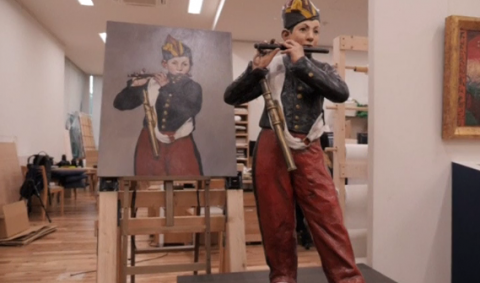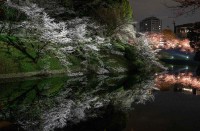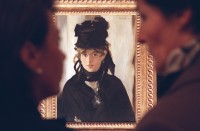
TOKYO, Japan (Reuters) — Ancient art and monuments could be given a new lease of life thanks to ‘cloning’ technology used by Japan’s Foundation for Cultural Heritage and Research.
Cultural artefacts damaged or destroyed by war and natural disaster have been reproduced in minute detail and put on display at the Tokyo University of the Arts museum.
The process goes beyond just reproduction. The team behind what they call the ‘cloned cultural properties’ use patented technology combining 3D mapping and 3D printing with layers of colour and texture added by hand.
Materials that are as close to the original materials are used, and academic references and records are consulted in order to reproduce colours faithfully.
The aim is to allow people to experience seeing important pieces of art and ancient monuments before degradation over time destroys them, or they are damaged in conflicts,
Lost monuments like the East Great Buddha in Bamiyan, Afghanistan or inaccessible ones like the Kangso Great Tomb in North Korea have been recreated for display in the museum, as well as works by European artists like Vincent Van Gogh and Edouard Manet
Bamiyan was a focus of world attention in March 2001 when Afghanistan’s former Taliban government destroyed two colossal sandstone Buddhas carved into cliffs, targeting the 1,700 year-old statues with tank and anti-aircraft guns, as well as dynamite, because they were un-Islamic.
Visitors to the exhibition sought out copies of artefacts they had not seen before.
“I’ve only seen a photo of it (the Shaka Triad Statue of Horyuji Temple), so it was great to see the statue,” said 64 year old visitor Atsuko Oguma.
Yutaka Yamazeki, another visitor to the exhibition, thought the idea of enabling more people to see the important works of art was a good one.
“These artefacts will go through erosion over time, so the technology that allows these items to be protected will be important. Although there is only one real cultural property, more people will be able to see it by exhibiting clones in various places. I think that’s great,” he said.
President of Foundation for Cultural Heritage and Art Research, Masaaki Miyasako, said that reproductions that attempted to replicate the artefacts so well had previously been viewed as counterfeit. Now, he hopes, his team’s innovation will widen access to art and historical artefacts.
“We believe we can create clones in order to show them to more people all year round. I hope people can enjoy and find inner peace through culture,” he told Reuters.
The technology would be useful to protect culture from being destroyed or smuggled by criminal organisations, he added, so the team hopes to enhance further cooperation with people living alongside artefacts.
The exhibition at the Tokyo University of the Arts museum will run until October 26.







